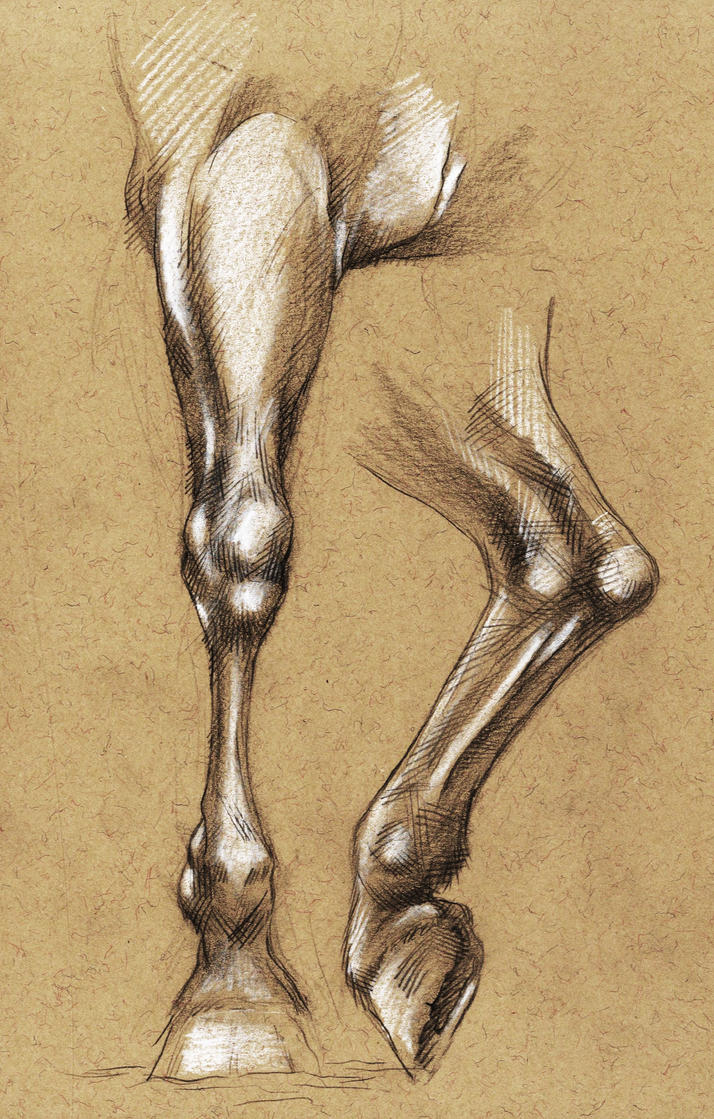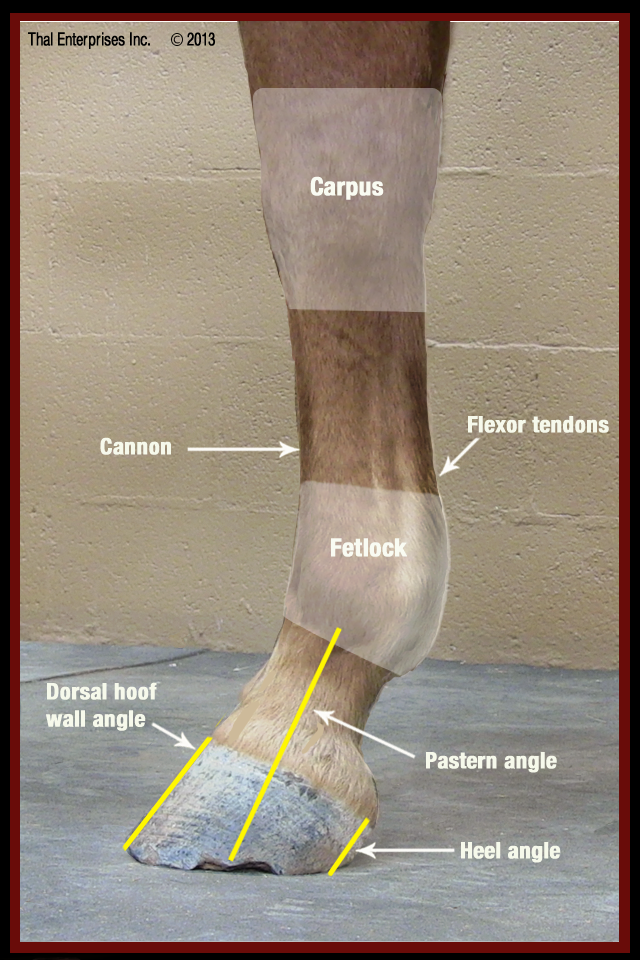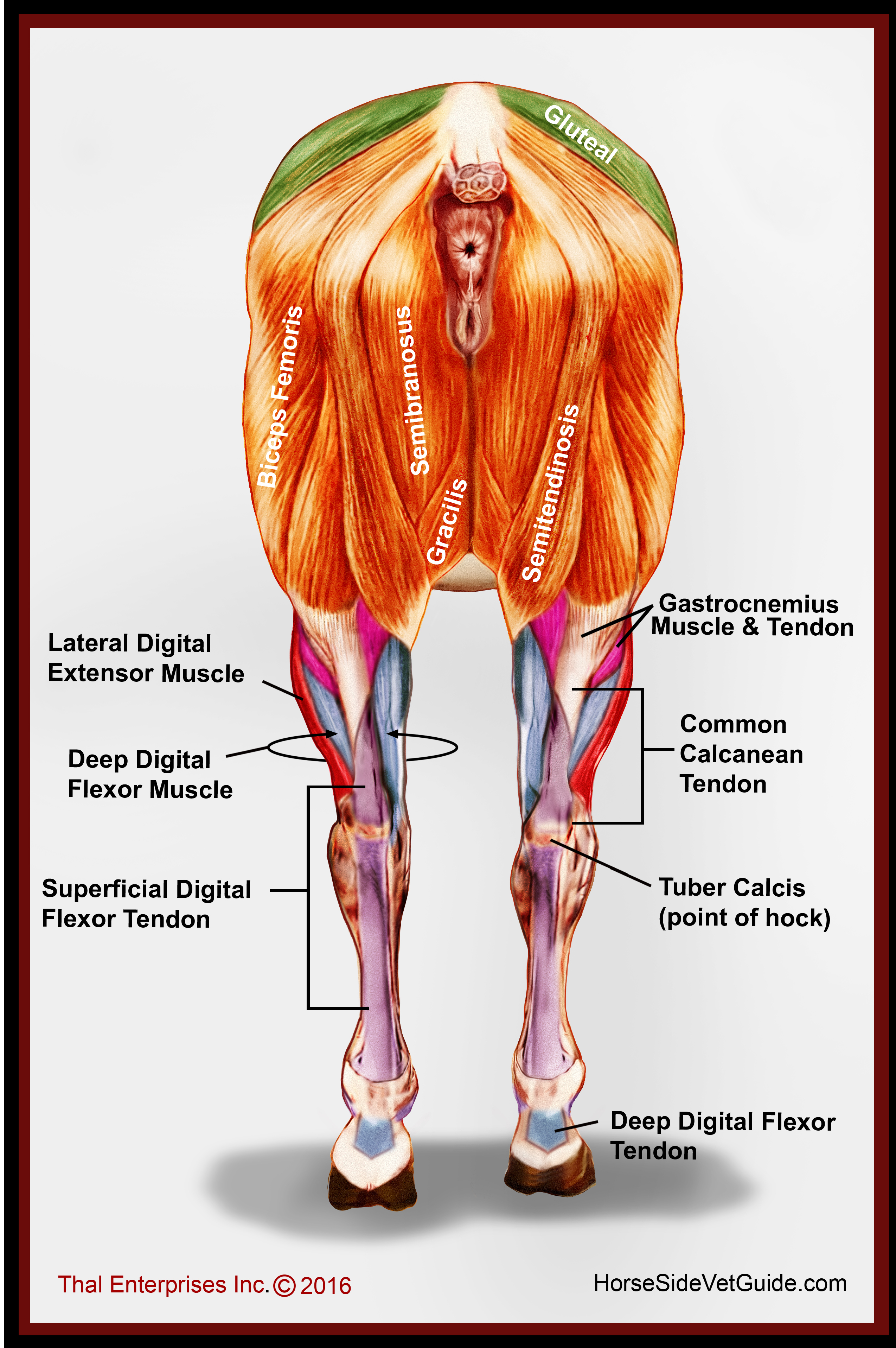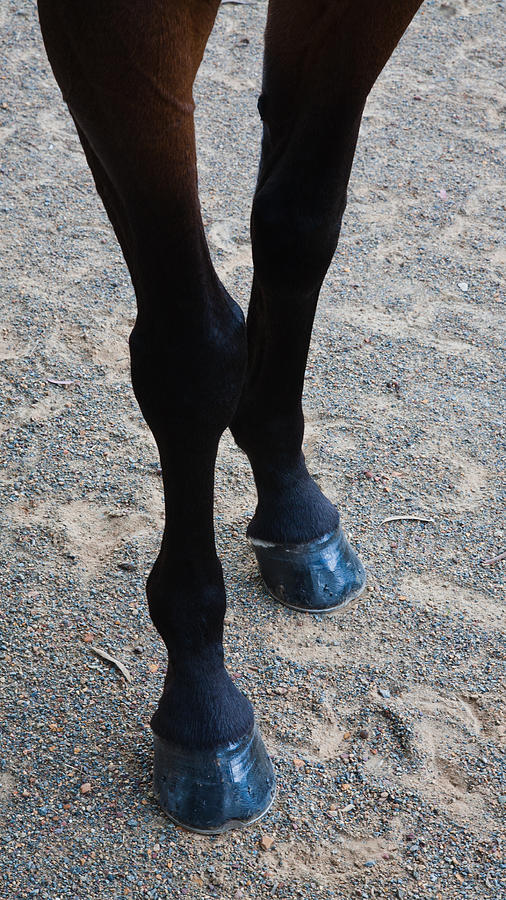
Horse leg anatomy by tirin54 on DeviantArt
Mammals Horse What's The Purpose of a Horse's Leg Chestnut? Advertisement Often called "night eyes," a horse's leg chestnut might seem unimportant now but it had a purpose years ago. Each one is unique, like a thumbprint, and grows continuously like fingernails.

Horse Leg Anatomy Form and Function EquiMed Horse Health Matters
Because a horse's legs are made up of a finely tuned system of bones and joints, ligaments and tendons, muscles and connective tissue designed to carry a relatively heavy body, good body conformation combined with healthy limbs is extremely important for proper function.

Leg Conformation The Horse
What Are The Different Parts of A Horse's Leg? Horse Leg Anatomy - Upper Hind Legs #1 - The pelvis #2 - The Femur #3 - The Stifle #4 - The Fibula and Tibia #5 - The Hock Horse Leg Anatomy - Upper Forelegs #1 - Scapular #2 - The Humerus #3 - The Elbow #4 - The Radius and Ulna #5 - The Knee Horse Leg Anatomy - Lower Legs #1 - The Cannon Bone

Lameness, Severe, Cannot Support Weight on Limb Horse Side Vet Guide
The primary function of the front legs is to support most of the horse' s weight, absorb the shock of concussion, and lift the body for the flight phase of each stride. Strongest construction consists of relatively straight legs with sturdy bone structure, big flat knees, and well-shaped fetlock joints. Straightness

5 Keys to Healthy Horse Legs Draper Therapies
The horse's general form is characteristic of an animal of speed: the long leg bones pivot on pulley-like joints that restrict movement to the fore and aft, the limbs are levered to muscle masses in such a way as to provide the most efficient use of energy, and the compact body is supported permanently on the tips of the toes, allowing fuller ex.

Horse Anatomy Reference Vitals & Anatomy upyourbutthealing
Since a horse's legs are made up of a finely tuned system of bones and joints, ligaments and tendons, muscles and connective tissue designed to carry a relatively heavy body, good conformation coupled with healthy limbs is extremely important for proper function. Important parts of the horse's forelimbs
:max_bytes(150000):strip_icc()/stockings-58d91d713df78c5162d10342.jpg)
White Leg Markings on Horses
Tendons attach muscle to bone. When the muscle contracts force is applied to the bone through the tendon creating force which may be either static, as in the standing horse, or result in motion. Made of carefully arranged protein fibers, primarily collagen, tendons are elastic. As long as the elastic tendon is not over stretched it recovers to.
/GettyImages-200554179-001-5a15c93cda271500376f4638.jpg)
Hind Leg Problems in Horses Causes and Treatment
The average leg length of a horse varies depending on the breed and age of the horse. The average leg length of a Thoroughbred horse is around 43 inches, while that of a Pony is around 28 inches. The average leg length of a horse increases as the horse grows older, with adult horses having longer legs than foals.

Database Record Viewer Horse Side Vet Guide
The horse leg anatomy in the rear includes the bones of the pelvis (the ilium, ischium, and pubic bones), femur, tibia, fibula, metatarsus, and phalanxes. It also includes the joints of the hip, stifles, hock, fetlock, pastern, and coffin. Hind limbs The top part of the hind limbs consists of three fused bones, called the ileum, ischium, and pubis.

Vitals & Anatomy Horse Side Vet Guide Horse anatomy, Anatomy, Horse care
The hock joint is the largest joint on the horse's hind legs. The joint is made of several small bones, the most prominent being the Os Calsis which gives the hock its angular shape. The strength of the hocks is very important as this is the most active joint in the horse's hind legs. The equine hock is analogous to the human ankle.

Horse legs with hooves closeup Animal Stock Photos Creative Market
An abnormality in a horse's movement caused by pain or reduced range of motion. It is commonly used interchangeably with the term unsoundness since a "sound" horse is one that is not lame. Lameness or Unsoundness

Horse Legs Photograph by Carole Hinding
Introduction The equine hind limb is also referred to as the pelvic hind limb. When working with horses, it is important to be able to accurately assess, diagnose and manage an equine patient. To do this, a good understanding of equine anatomy is essential. Anatomy

Quick Guide To Horse Leg Markings Horse markings, Horse care, Horses
Neck: The portion of the horse's body that is between the head and shoulders. Shoulder: The upper portion of the horse's front leg. Withers: The bony ridge at the base of the neck between the shoulder blades. This ridge is created by the top portion of the thoracic vertebrae. Horses are measured at the withers.

Blood bay horse rearing on its hind legs Most Beautiful Horses, Pretty Horses, Horse Crazy
The back transfers the force and driving power from the hind legs. A horse should have well-formed withers where the shoulder can attach to the rest of the body. The back should be one-third of the horse's length. Measure back length from the middle of the withers to the point of hip. A horse's back should be shorter than their underline.

Running Horse in the Desert Stock Photo Image of galloping, nature 18709594
In summary, horse legs are made up of various apparatuses consisting of muscles, tendons, ligaments, and connective tissue. All of these devices work together to help stand, move, and protect from injuries to the horse legs. Unfortunately, often horses face health problems like tendon or ligament injuries. Although there is a bunch of different.
/low-section-of-horse-515042659-58d91b435f9b58468381b5ac.jpg)
White Leg Markings on Horses
Parts of a horse on both the back and front legs. 32. Cannon bone and splint bone. The cannon bone is the large metacarpal below the knee (front) or the hock (back), and the splint bone is the small, bony pencil-like structure behind the cannon bone. These bones resemble the bones in our hands.